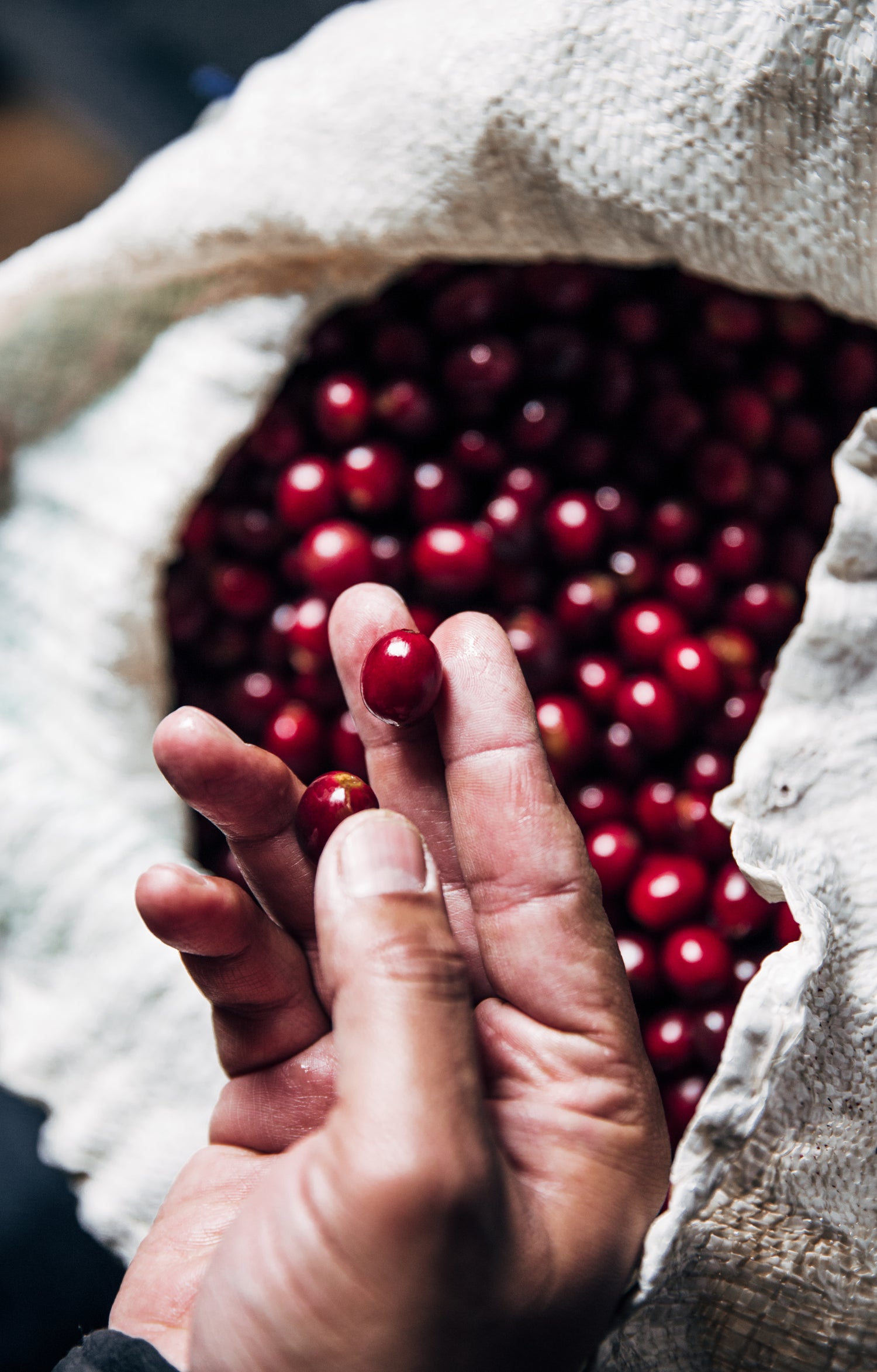FAQ
Collapsible content

When + where will my order be roasted?
We roast-to-order Monday / Wednesday / Friday at our Greensboro roastery-tasting room.
Orders placed by 12:00pm will be roasted + shipped the next roast day.
Does Vignette offer Fair Trade / Organic coffees?
Yes, we usually do! Several of our current offerings are FTO, though we do not pay to label our roastery as Certified Organic.
Vignette doesn’t prioritize purchasing certification coffees, but we do purchase some FTO lots and absolutely pursue the values behind them by emphasizing ongoing transparency and pursuit of quality and layered sustainability with every partner. We seek to grow and maintain relationships that benefit all life in the custody chain - from the producer to the land to employees to you.
Though certifications have some benefits, like creating market awareness, no single certification covers every ethical value. Certification is expensive for all in the custody chain (including you), and doesn’t necessarily create the change we seek.
To put Fair Trade in perspective, Vignette pays 2-4 times over commodity coffee prices and almost 3 times as much as Fair Trade coffees. Higher prices reflect our goals of high-quality and sustainability.
Organic farming is hard, necessary work, but the burden on producers and roasters can be prohibitive and occasionally unrealistic given the risk and difficulty of agriculture. We source coffees from family-owned farms and co-ops of the people, from people who are proud of the land, air, and water around them and strive to take care of it.
How much does Vignette pay for coffee?
We believe in paying producers well beyond their cost of production and living.
To accomplish this, we buy from specialty importers, who charge premium prices for access to transparent, high-quality, ethically-sourced green coffee.
Expect an annual accounting of Vignette's purchasing around the time we celebrate our first birthday. As a preview, our current selection ranges from $4.30 - $6.95 FOB. To put this in perspective, current commodity grade price is $2.16. For additional perspective, a living income price for a producer in Huila, Colombia is $2.10 FOB. It's worth nothing that the C Market has risen considerably from its historic lows.
How much caffeine does Vignette coffee contain?
Vignette doesn't lab test our coffees for caffeine, but there are some guidelines to consider.
An 8 fl oz cup of black coffee contains ~80 - 100mg caffeine accourding to the FDA, who cite 400mg caffeine per day as a good limit for most healthy adults. Always consider your own mind and body when consuming caffeine.
A double espresso and an 8 fl oz drip coffee have about the same amount of caffeine. Cold brew, however, can have almost twice the caffeine per serving due to its long steep time (10-20 hours) and stronger brewing ratio (1:4-1:8). In general, stronger and longer brews will increase caffeine content.
Coffee’s genetics (species + variety) and terroir (microclimate) impact caffeine content. Vignette often purchases 100% Coffea arabica or Coffea arabica-canephora hybrids, which have an average to above-average amount of caffeine. Compare these to 100% Coffea canephora, which is a hardier and more pest resistant species, largely thanks to its greater caffeine content.
Roasting does not have a significant effect on caffeine content directly, though roast level may play a part in determining how strong you prefer your coffee brewing ratio to be.
How should I choose a bagged coffee?
Start with roast level. Vignette offers multiple options for each Light, Medium, and Dark roast level. Many guests favor medium roast for everyday brewing, light roasts for unique flavors, and dark roasts for milk-based beverages.
Beyond roast, look at Process. Natural Process coffees tend to smell like dried fruit and showcase greater fermentation. At the other end of the spectrum, Washed Process coffees are often lively and sweet.
Make a note of the elevation. Higher elevations (2000 masl) yield higher acidities and greater complexity, which lead to an exciting, structured mouthfeel. Lower elevations (1000 masl) produce nuttier, chocolatey coffees, which can be very satisfying in medium to dark roasts.
There are also the traditions of the producer and the region, the microclimate, and other factors like roast age and extraction that determine how much you'll enjoy your coffee. Brewers can't control it all, but it is rewarding to learn what you like and how to brew it!
Learn more in Vignette's The Bigger Picture class.
How should I store my bagged coffee?
Whole bean coffee and especially ground coffee stale more quickly when exposed to heat, light, moisture, and oxygen. The best way to avoid these staling factors is to keep your well-sealed bag in a dark, slightly cooler than room temperature place like a pantry or cupboard. Vignette's bags can be rolled down and re-tintied, which we encourage after each use.
We do not recommend the refrigerator for storage as humidity levels tend to fluctuate and off-aromas are rampant. Between taking the coffee out of the fridge and putting it back in, as well as humidity changes from opening the door and internal defrosting cycles, your fridge coffee will age quickly.
The freezer can be useful, but there is a catch. If you freeze coffee beans in an airtight container, their flavor is locked-in and tastes essentially the same upon being thawed. The catch is that if you freeze coffee, then thaw it, then refreeze it, the coffee’s cell walls break down due to the formation of ice crystals. This results in quick flavor degradation. Interestingly, you can grind and brew coffee beans right out of the freezer. They will actually grind up more evenly in this frozen state than at room temperature! You may want to raise your water temperature to compensate.
What practices make the best coffee?
Number one is that you like the specific coffee. Roast, process, and more all influence cup character.
The roast should be reasonably fresh (a few days to a month or so off) and well-stored (air tight, slightly cooler cupboard). Dark roasts age more quickly than light roasts, but are ready to brew earlier off-roast.
Filter your municipal tap water through a basic carbon filter (e.g. Brita) as they reduce off-aromas like chlorine.
Water that is too hard (certain spring) or too soft (distilled) won’t produce a very good cup of coffee. If you live in Greensboro, filtered tap water should be just about right.
Vignette recommends investing in a quality burr grinder (with new or reasonably sharp used burrs) to ensure an even grind.
Choose a brew method you enjoy, though we shy away from any low-time / low-temp brewers that might underextract your coffee.
Making Coffee (filter coffee) and Getting on Bar (espresso) are great places to start. Continue learning with Dialed-In Espresso and Exploring Extraction.
How should I grind my coffee?
Grind freshness and evenness help make a great cup of coffee. Burr grinders help immensely with this.
Finer vs. Coarser
Finer grinds extract more quickly. Coarser grinds extract more slowly.
If your brew tastes sour / sharp, fine up one or more notches. If your brew tastes bitter / rough, coarsen up one or more notches.
Grind Chart
Very Fine like Powdered Sugar for Espresso + Ibrik
Fine like Soft Sand for Moka Pot (Stovetop Espresso)
Fine-Medium like Fine Sand for Aeropress
Medium-Fine like Table Salt for Cone-shaped Pour Overs (Hario V60)
Medium like Beach Sand for Flat + Wedge-shaped Pour Overs (Kalita Wave)
Medium-Coarse like Rough Sand for Auto-Drippers
Coarse like Sea Salt for Cold Brew
Very Coarse like Kosher Salt for French Press
